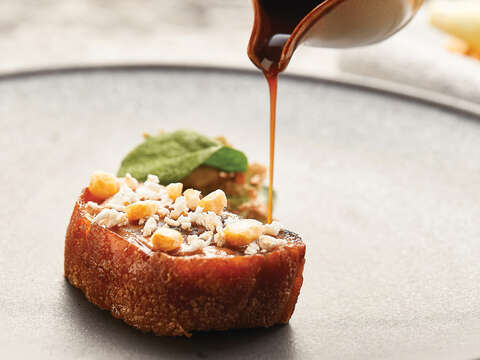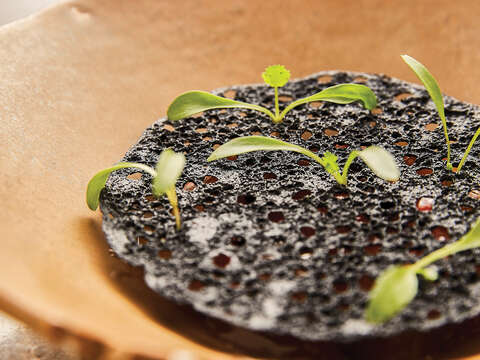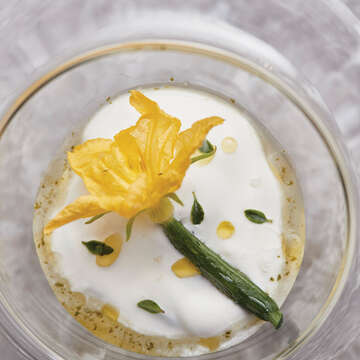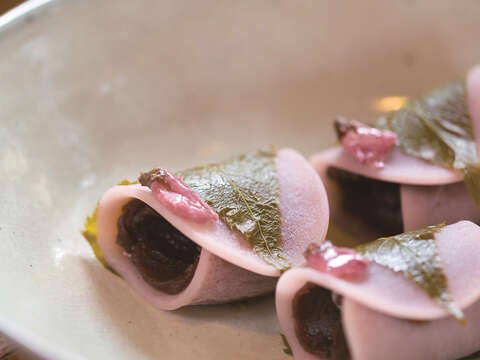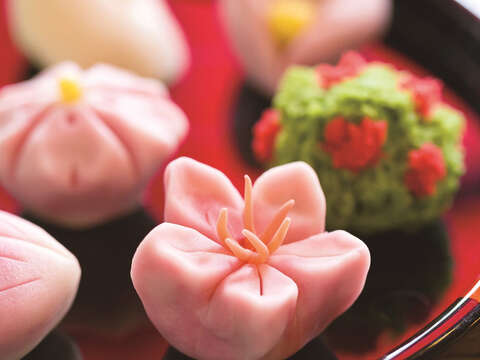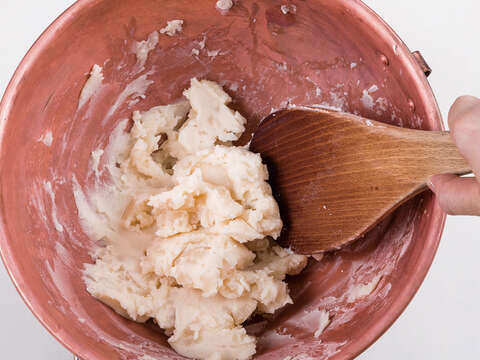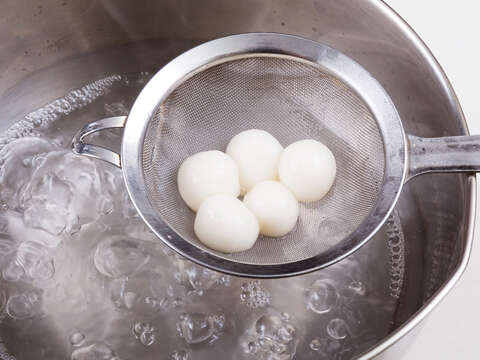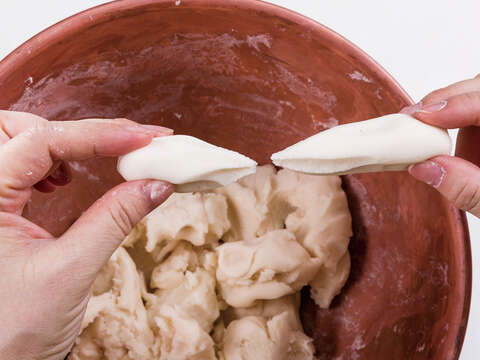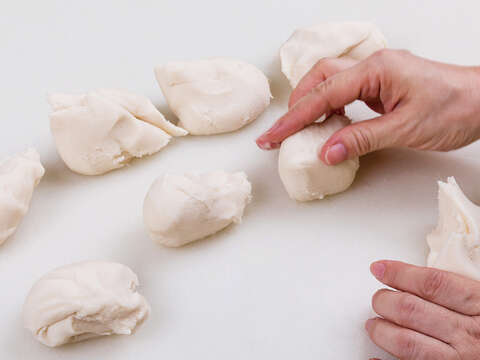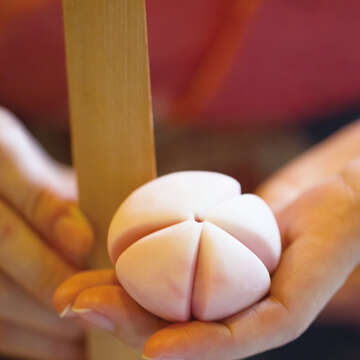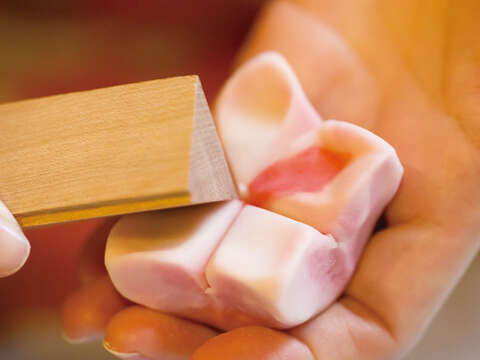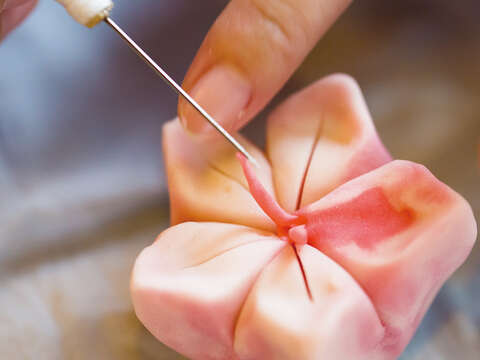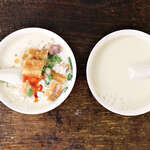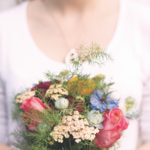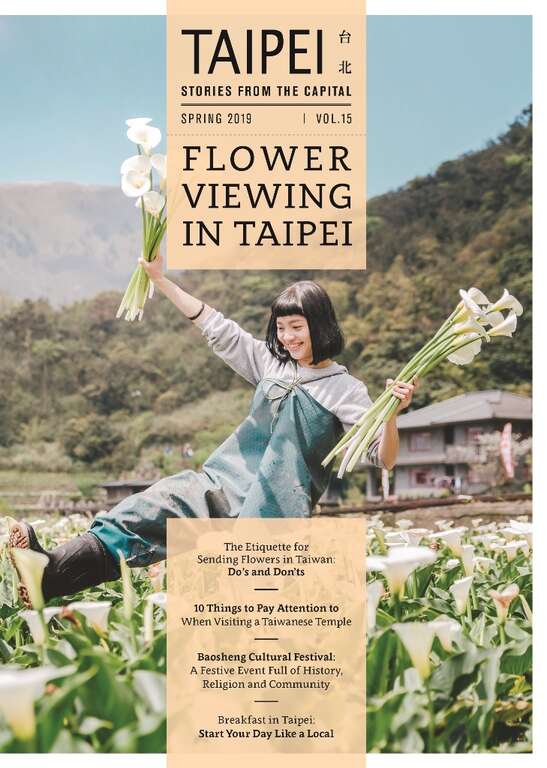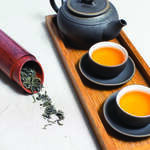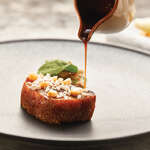Post date:2019-03-22
1587
TAIPEI #15 (2019 SPRING)
Exotic Food in Taipei: Spring in the Plates
WORDS BY Shih Yonghao
TRANSLATION BY Joe Henley
PHOTOS BY Yang Zhiren, Orchid Restaurant, published by Happiness Always
With spring's arrival, the blossoming land is awash in beautiful colors. The table is decorated with some fresh greenness as well, such as French cuisine embellished with newly sprouted flowers and plants or floral wagashi enjoyed with fragrant matcha, all of which comprise a symphony of vision and taste.
THE SPRING DISHES DERIVE FROM THE BLOSSOMS
How can the dishes show the colors of spring on the table? Gildas Périn, head chef at Orchid Restaurant (Orchid Restaurant 蘭), who excels in creative French cuisine, also sees a different light in the designs of spring dishes in Taiwan, a land full of clean spring air. The so-called "spring air" should not only include flowers, but also the sprouts of new life, which, of course, serve as inspiration for chefs to create new dishes as well.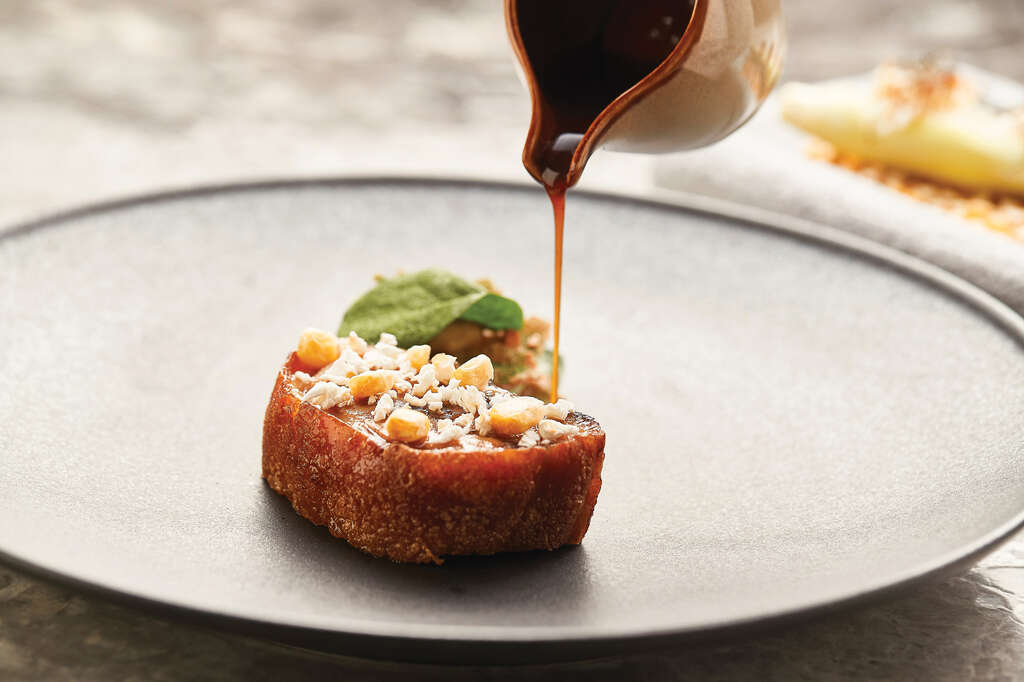 ►To chefs, new sprouts and flowers are the symbols of new flavors alight on the clean spring air. (photo _ Orchid Restaurant)
►To chefs, new sprouts and flowers are the symbols of new flavors alight on the clean spring air. (photo _ Orchid Restaurant)
In addition to whole flowers, Orchid Restaurant also uses simple ingredients such as coriander sprouts and pea sprouts for decoration. General ornamental flowers, like the pansy, are nearly out of taste despite their colorful appearance. Compared to such, vegetable sprouts not only add some greenness, but also enhance the taste of dishes.
In the past, people mostly took edible flowers as decoration and embellishment for certain types of dishes. However, more practical usages will have to be found in order for these flowers to become a regular ingredient in all kinds of cuisine, including that of the French. Therefore, simple and common ingredients like cucumber are easier to use for delicate French cuisine. Cucumber slices can be added to iced yogurt, or can be made into sorbet with a smooth taste, as well as added with cucumber flowers for decoration. The same ingredient can be made into an appetizer or dessert.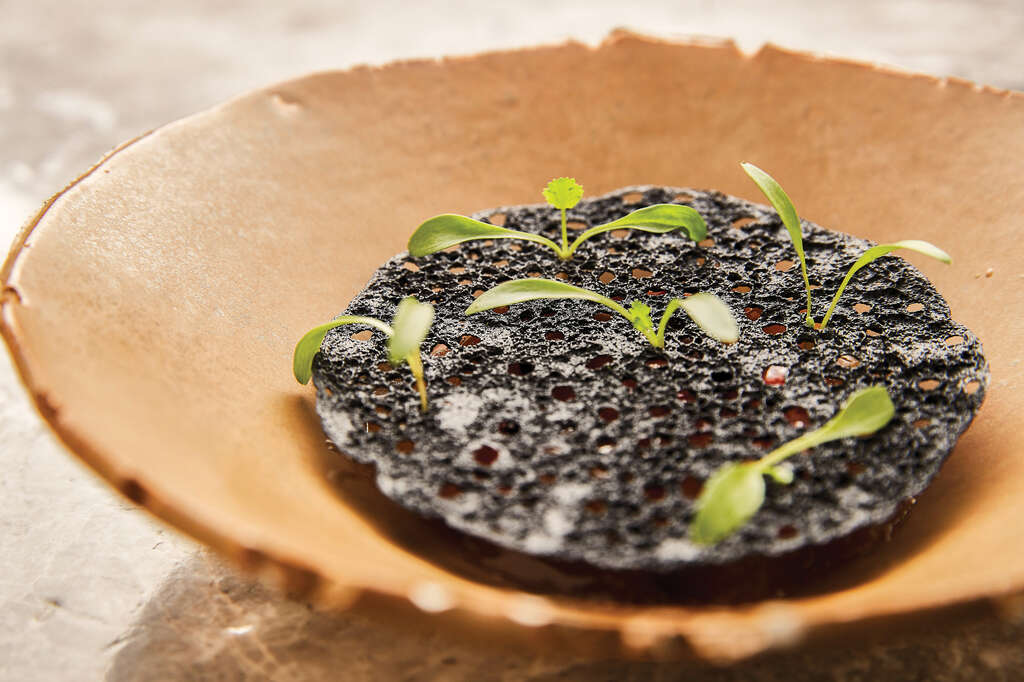 ►Edible plants can decorate the delicacies to provide rich flavor for eyes and tongues. (photo _ Orchid Restaurant)
►Edible plants can decorate the delicacies to provide rich flavor for eyes and tongues. (photo _ Orchid Restaurant)
To connect French cuisine and the local land based on the changing of the seasons as well as the characteristics of local ingredients is also a big challenge when designing dishes. White asparagus which abound in spring have put a whole new flavor on the table at Orchid Restaurant. Local asparagus and Koshihikari rice are used, and the asparagus juice is a most essential byproduct that shall not be wasted. Applying the concentrated juice extracted from the bottom segment to grilled asparagus can enhance the taste of the dish. Finally, nori powder and celery can be added for yet more colors of spring.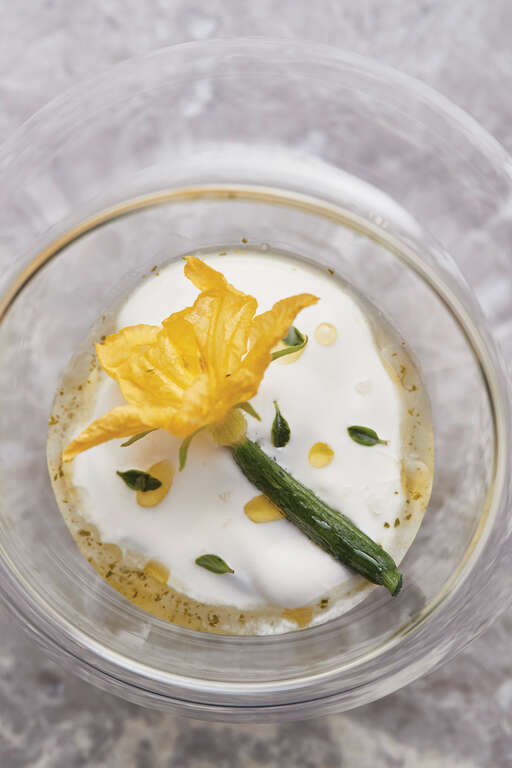 ►Edible plants can decorate the delicacies to provide rich flavor for eyes and tongues. (photo _ Orchid Restaurant)
►Edible plants can decorate the delicacies to provide rich flavor for eyes and tongues. (photo _ Orchid Restaurant)
OBTAIN THE BEST TASTE UNDER THE SUITABLE SOLAR TERMS
The Japanese wagashi (dessert), with equal parts delicacy and color when experienced through the lens of French cuisine, can bring the essence of spring to the table.
Emily Wu (吳意菁) from Tokyo Confectionery School shared her experiences after returning to Taiwan, and is now acting as a teacher of "Wagashi Experience" in Beitou Museum(北投文物館). She always wears an elegant wafuku in class, and seems to have dozens of creative ideas when speaking of wagashi.
"In the early days, wagashi were mostly for ceremonial purposes, and were rarely made in an animal shape. Later, due to the influences of the Japanese tea ceremony, the shape and flavor of wagashi began to be inspired by the solar cycle. To prevent affecting the original flavor of tea, ingredients with strong flavors will not be selected for making wagashi," says Emily.
In other words, wagashi are made according to seasonal crops, scenes, and flowers of different seasons. For example, "Sakura Mochi" is a kind of mochi with a cherry-like pink color and red bean paste inside. A piece of pickled sakura leaf covers the mochi, and another salted sakura blossom is decorated upon it. Holding it in both hands is just like holding spring in one's hands. Take a small bite, and the light floral fragrance and a flavor of mixed sweetness and saltiness expounds in the mouth.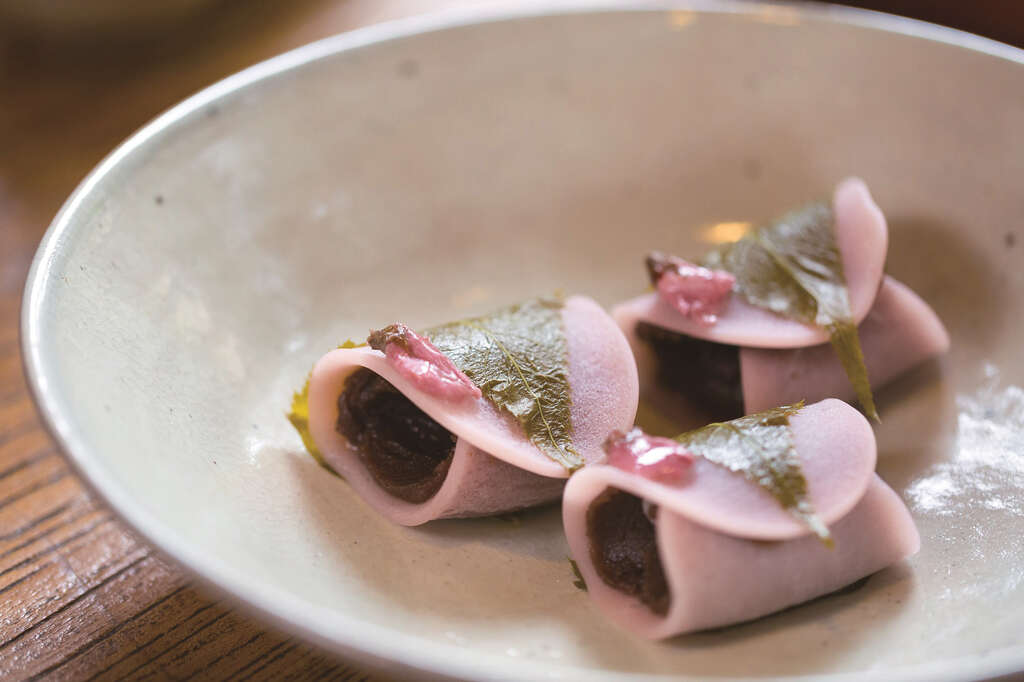 ►Sakura Mochi covered in pickled sakura leaf represents the beautiful scene of blossoming spring.(photo Yang Zhiren)
►Sakura Mochi covered in pickled sakura leaf represents the beautiful scene of blossoming spring.(photo Yang Zhiren)
WAGASHI REPRESENTS SPRING IN TAIPEI
In addition to Sakura Mochi, which has a most satisfying taste, there is also a kind of wagashi called "Nerikiri". The term "wagashi" widely refers to traditional Japanese pastries. However, nerikiri particularly refers to the ones based on navy bean paste, which are then dyed with various pigments, and encased by red bean paste or mung bean paste, and lastly shaped, sculpted, pressed, and cut with various tools. Emily shares her expertise in making wagashi in the shape of an azalea which she learned in Japan. Firstly, slowly press and sieve some bean paste dyed green with a powder sieve made of horse hair, and make the paste into green shreds like a grove, which encase the red bean paste within. Then, press and sieve some red bean paste and scatter it among the mung bean paste. Such forms the lovely azalea in clusters in your hands, which is a common beautiful scene on the street of Taipei in spring.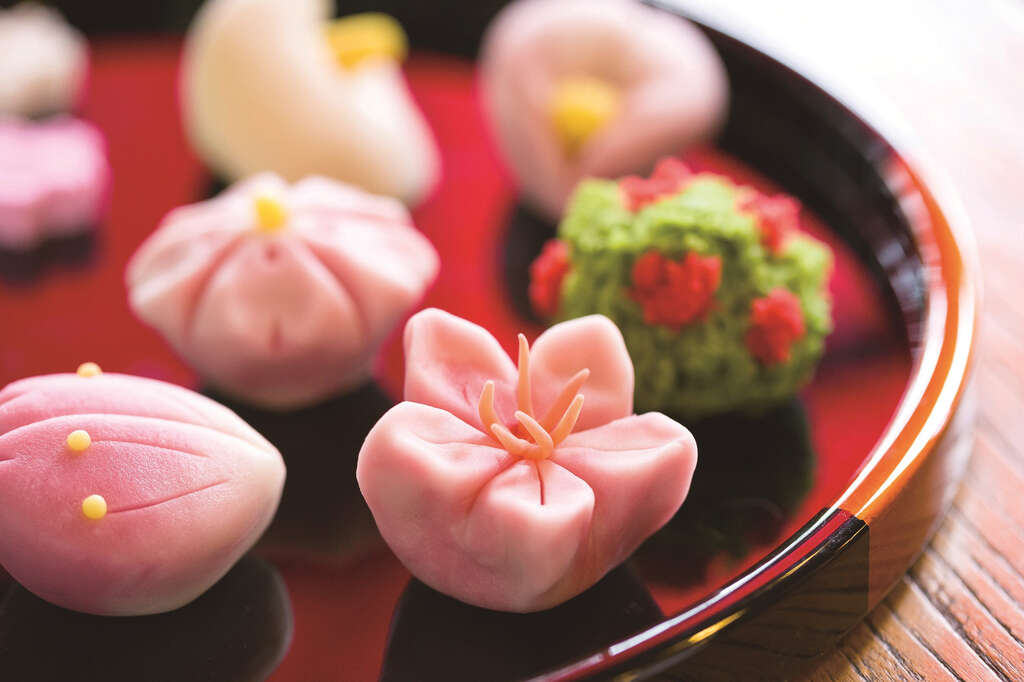 ►Sakura Mochi covered in pickled sakura leaf represents the beautiful scene of blossoming spring.(photo Yang Zhiren)
►Sakura Mochi covered in pickled sakura leaf represents the beautiful scene of blossoming spring.(photo Yang Zhiren)
However, since Azalea is the city flower of Taipei City, it should be, Emily maintains, the central focus on the plate rather than being hidden among green leaves.
Thus, Emily creatively uses the pinkish bean paste to encase the red bean paste first, and slowly shapes it into the form of an azalea with her crafty hands. Then, she draws the lines of petals, and adds some tiny red dots on them. The result is a stunning representation of a blossoming and lovable azalea.
These seasonal delicacies which are inspired by natural scenes create an exclusive flavor of Taipei, helping people to linger in these wonderful but fleeting spring days.
AZALEA WAGASHI RECIPE
STEP 1 → Make Nerikiri (Wagashi Skin)
[ Ingredients ]
Navy bean paste 1,000g
Mizuame 50g
Glutinous rice powder 18g
Water 15 to 25g
[ Implements ]
A steel basin
A small pot with handle (such as copper pot or deep cooking pan) A wooden ladle
A strainer
Food wraps
1️⃣Pour the glutinous rice powder into the basin, add 18g of water on the powder, and knead it. Add the water until the powder becomes paste, which should be slightly sticky but not attaching to hands. In principle, the amount of water is equal to that of the powder, but it should be slowly added due to possibly different dryness of different brands. You should judge how it can become paste yourself.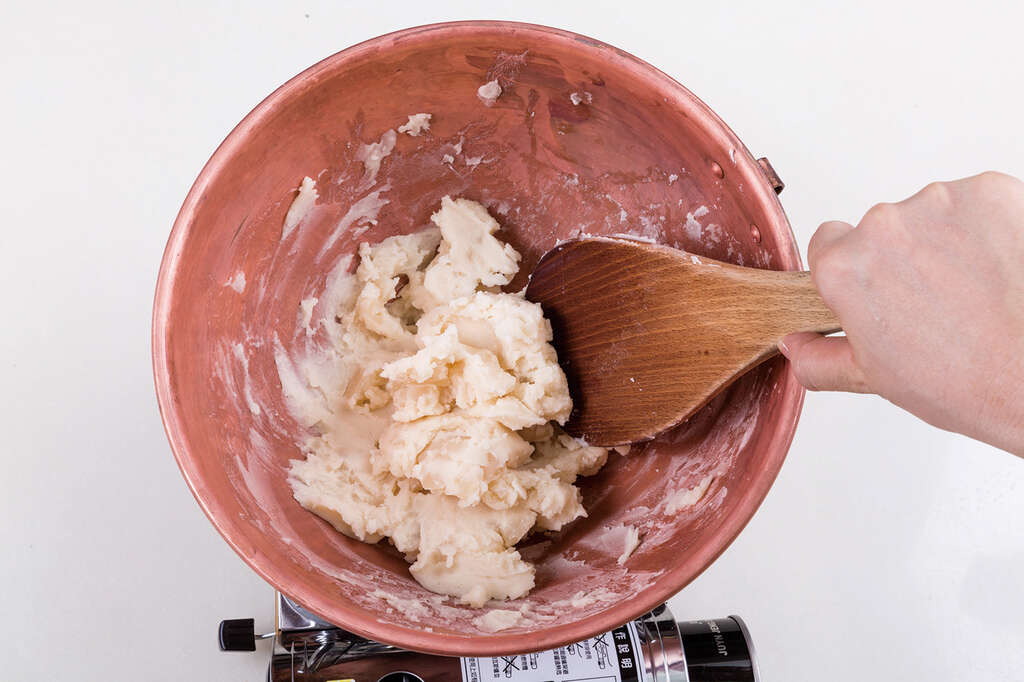
2️⃣Add the water into the small pot to 80% capacity. After the water is boiled, make the paste into separate balls, knead it to a round shape, and boil them in the water until their shape is similar to that of mochi, which will take approximately 3 minutes. After that, take them out and pour out the water in the pot.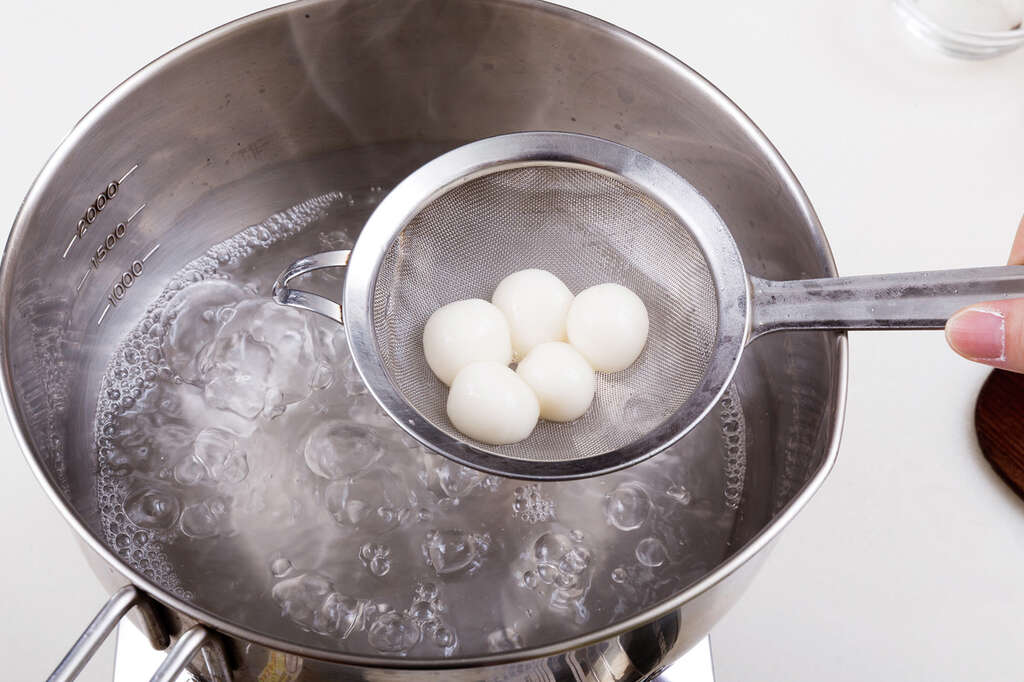
3️⃣Add a small amount of water again in the pot (which is simply for dividing the navy bean paste from the bottom to avoid possible scorching), boil the paste using a small ame, and slowly stir it with the ladle.
4️⃣Then, add the small rice balls and continue to boil them until the paste becomes malleable and flexible. Add mizuame to increase the wetness of the nerikiri, and then it is complete.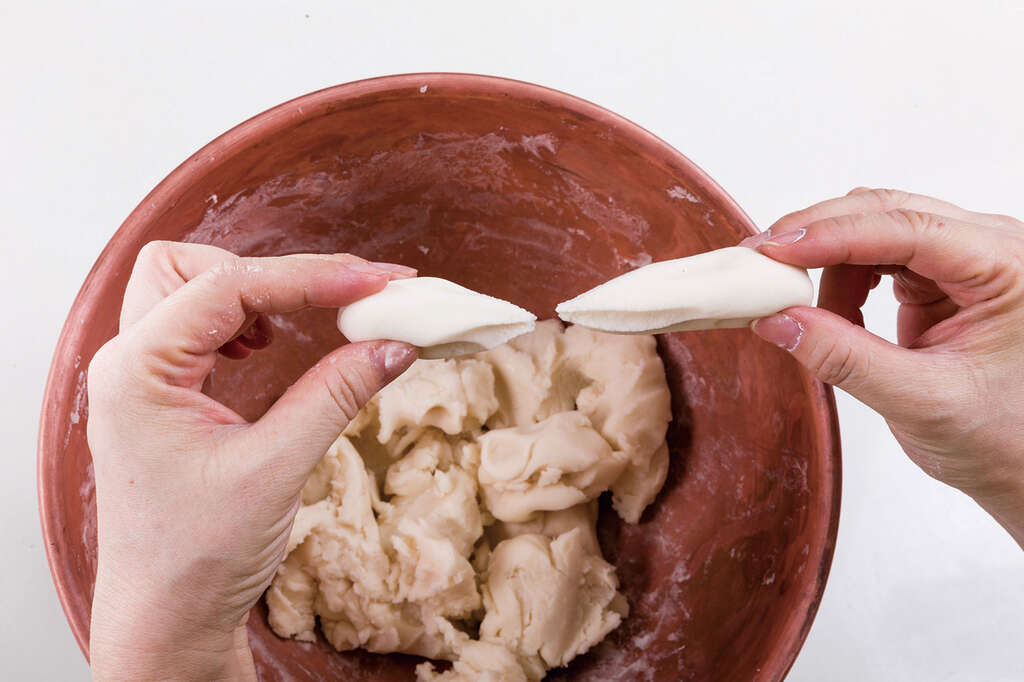
5️⃣Sieve the nerikiri with a strainer for more delicate particles and then separate the nerikiri into small pieces and knead them into balls. Repeating this 2 to 3 times can make the nerikiri white.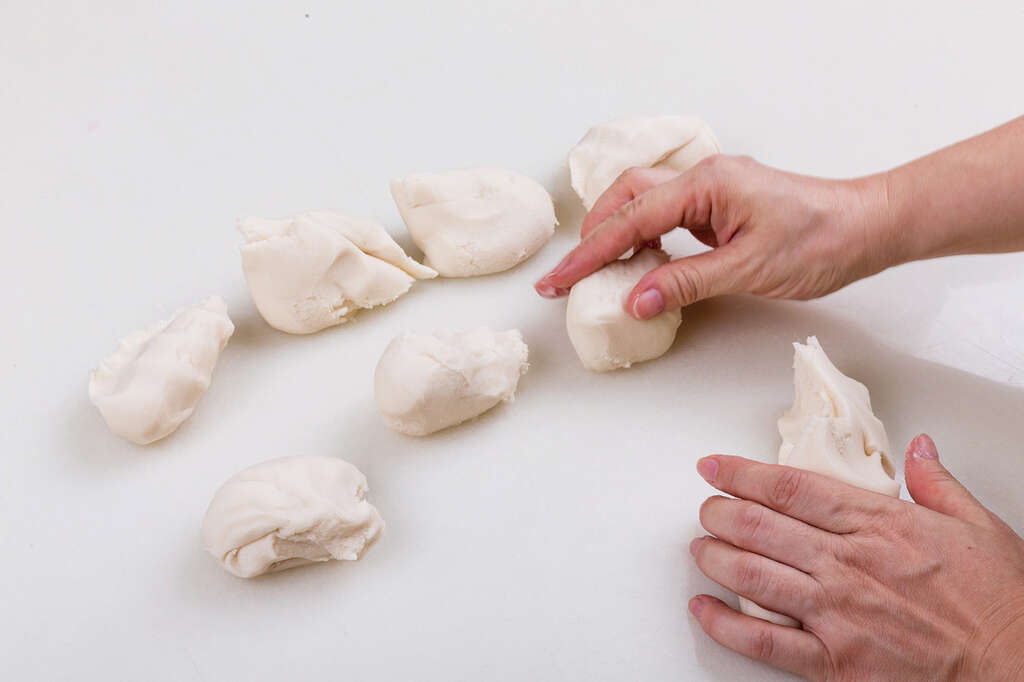
6️⃣Finally, wrap the package that has been reduced to room temperature with plastic wrap, and store it in the refrigerator. When used, it should be colored according to the desired shape. For example, the azalea in this demonstration is pink, so all you need to do is to dye it with pink food dye.
STEP 2 → Knead the Wagashi
[ Ingredients ]
Pink nerikiri 22g
Ready-made red mung bean paste 15g
[ Implements ]
A triangle rod (or thin chopstick as an alternative)
A needle
A ball-ended rod
1️⃣Knead the pink nerikiri into a round shape, and press it. Put red bean paste in the center, encase it, and knead it into a ball.
2️⃣Use the triangle rod to press the edges of the ball into five flat surfaces, just as the five petals of an azalea. Since the petals of an azalea are slightly pointed, you can make the outline of petals using your hands or implements.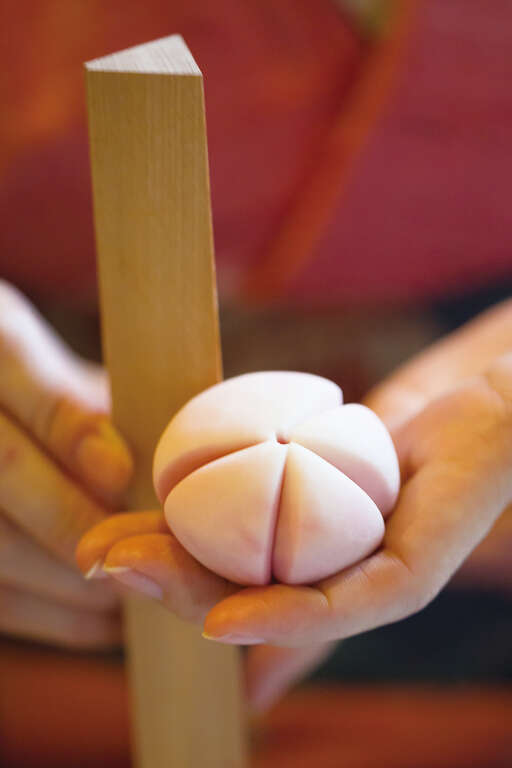
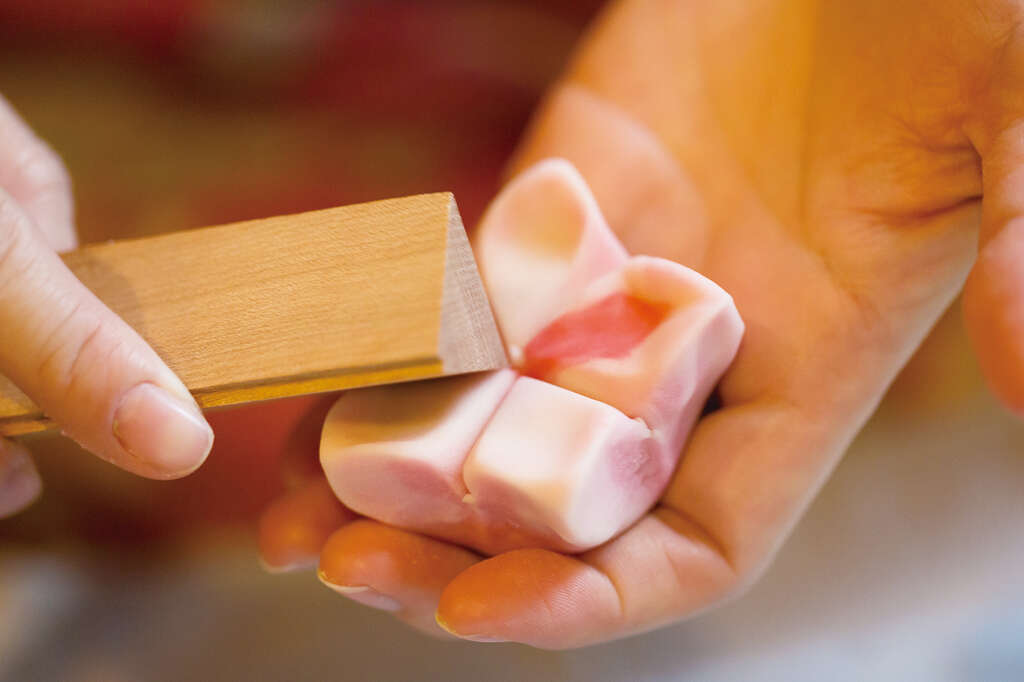
3️⃣Use the needle or the ball-ended rod to draw lines on the petals, and it is complete.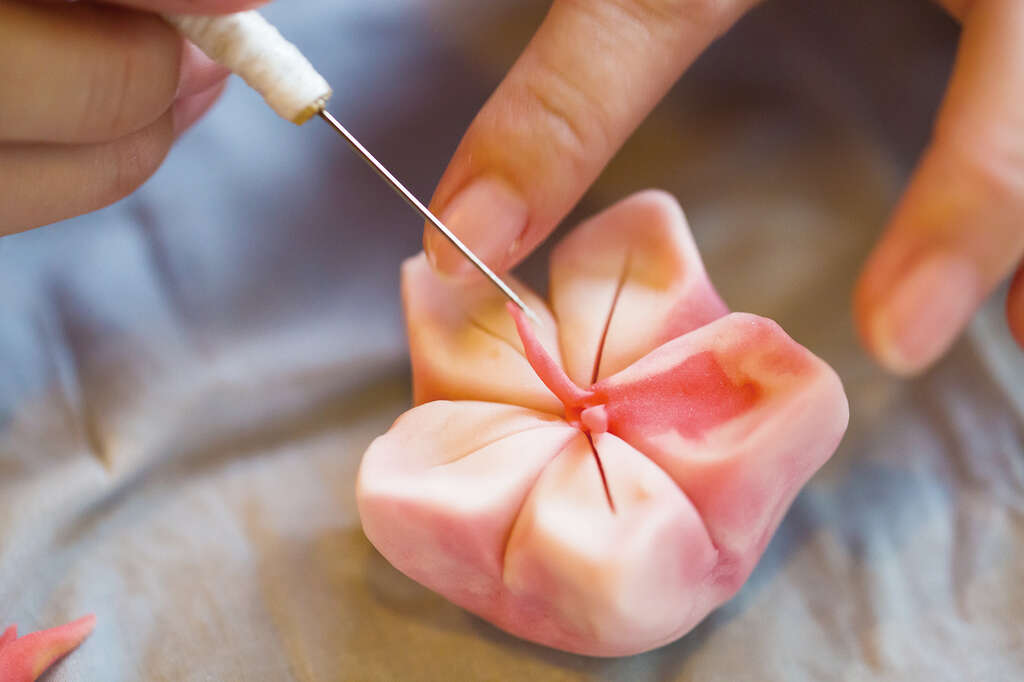
Exotic Food in Taipei: Spring in the Plates
WORDS BY Shih Yonghao
TRANSLATION BY Joe Henley
PHOTOS BY Yang Zhiren, Orchid Restaurant,
With spring's arrival, the blossoming land is awash in beautiful colors. The table is decorated with some fresh greenness as well, such as French cuisine embellished with newly sprouted flowers and plants or floral wagashi enjoyed with fragrant matcha, all of which comprise a symphony of vision and taste.
THE SPRING DISHES DERIVE FROM THE BLOSSOMS
How can the dishes show the colors of spring on the table? Gildas Périn, head chef at Orchid Restaurant (Orchid Restaurant 蘭), who excels in creative French cuisine, also sees a different light in the designs of spring dishes in Taiwan, a land full of clean spring air. The so-called "spring air" should not only include flowers, but also the sprouts of new life, which, of course, serve as inspiration for chefs to create new dishes as well.
 ►To chefs, new sprouts and flowers are the symbols of new flavors alight on the clean spring air. (photo _ Orchid Restaurant)
►To chefs, new sprouts and flowers are the symbols of new flavors alight on the clean spring air. (photo _ Orchid Restaurant)In addition to whole flowers, Orchid Restaurant also uses simple ingredients such as coriander sprouts and pea sprouts for decoration. General ornamental flowers, like the pansy, are nearly out of taste despite their colorful appearance. Compared to such, vegetable sprouts not only add some greenness, but also enhance the taste of dishes.
In the past, people mostly took edible flowers as decoration and embellishment for certain types of dishes. However, more practical usages will have to be found in order for these flowers to become a regular ingredient in all kinds of cuisine, including that of the French. Therefore, simple and common ingredients like cucumber are easier to use for delicate French cuisine. Cucumber slices can be added to iced yogurt, or can be made into sorbet with a smooth taste, as well as added with cucumber flowers for decoration. The same ingredient can be made into an appetizer or dessert.
 ►Edible plants can decorate the delicacies to provide rich flavor for eyes and tongues. (photo _ Orchid Restaurant)
►Edible plants can decorate the delicacies to provide rich flavor for eyes and tongues. (photo _ Orchid Restaurant)To connect French cuisine and the local land based on the changing of the seasons as well as the characteristics of local ingredients is also a big challenge when designing dishes. White asparagus which abound in spring have put a whole new flavor on the table at Orchid Restaurant. Local asparagus and Koshihikari rice are used, and the asparagus juice is a most essential byproduct that shall not be wasted. Applying the concentrated juice extracted from the bottom segment to grilled asparagus can enhance the taste of the dish. Finally, nori powder and celery can be added for yet more colors of spring.
 ►Edible plants can decorate the delicacies to provide rich flavor for eyes and tongues. (photo _ Orchid Restaurant)
►Edible plants can decorate the delicacies to provide rich flavor for eyes and tongues. (photo _ Orchid Restaurant)OBTAIN THE BEST TASTE UNDER THE SUITABLE SOLAR TERMS
The Japanese wagashi (dessert), with equal parts delicacy and color when experienced through the lens of French cuisine, can bring the essence of spring to the table.
Emily Wu (吳意菁) from Tokyo Confectionery School shared her experiences after returning to Taiwan, and is now acting as a teacher of "Wagashi Experience" in Beitou Museum(北投文物館). She always wears an elegant wafuku in class, and seems to have dozens of creative ideas when speaking of wagashi.
"In the early days, wagashi were mostly for ceremonial purposes, and were rarely made in an animal shape. Later, due to the influences of the Japanese tea ceremony, the shape and flavor of wagashi began to be inspired by the solar cycle. To prevent affecting the original flavor of tea, ingredients with strong flavors will not be selected for making wagashi," says Emily.
In other words, wagashi are made according to seasonal crops, scenes, and flowers of different seasons. For example, "Sakura Mochi" is a kind of mochi with a cherry-like pink color and red bean paste inside. A piece of pickled sakura leaf covers the mochi, and another salted sakura blossom is decorated upon it. Holding it in both hands is just like holding spring in one's hands. Take a small bite, and the light floral fragrance and a flavor of mixed sweetness and saltiness expounds in the mouth.
 ►Sakura Mochi covered in pickled sakura leaf represents the beautiful scene of blossoming spring.(photo Yang Zhiren)
►Sakura Mochi covered in pickled sakura leaf represents the beautiful scene of blossoming spring.(photo Yang Zhiren)WAGASHI REPRESENTS SPRING IN TAIPEI
In addition to Sakura Mochi, which has a most satisfying taste, there is also a kind of wagashi called "Nerikiri". The term "wagashi" widely refers to traditional Japanese pastries. However, nerikiri particularly refers to the ones based on navy bean paste, which are then dyed with various pigments, and encased by red bean paste or mung bean paste, and lastly shaped, sculpted, pressed, and cut with various tools. Emily shares her expertise in making wagashi in the shape of an azalea which she learned in Japan. Firstly, slowly press and sieve some bean paste dyed green with a powder sieve made of horse hair, and make the paste into green shreds like a grove, which encase the red bean paste within. Then, press and sieve some red bean paste and scatter it among the mung bean paste. Such forms the lovely azalea in clusters in your hands, which is a common beautiful scene on the street of Taipei in spring.
 ►Sakura Mochi covered in pickled sakura leaf represents the beautiful scene of blossoming spring.(photo Yang Zhiren)
►Sakura Mochi covered in pickled sakura leaf represents the beautiful scene of blossoming spring.(photo Yang Zhiren)However, since Azalea is the city flower of Taipei City, it should be, Emily maintains, the central focus on the plate rather than being hidden among green leaves.
Thus, Emily creatively uses the pinkish bean paste to encase the red bean paste first, and slowly shapes it into the form of an azalea with her crafty hands. Then, she draws the lines of petals, and adds some tiny red dots on them. The result is a stunning representation of a blossoming and lovable azalea.
These seasonal delicacies which are inspired by natural scenes create an exclusive flavor of Taipei, helping people to linger in these wonderful but fleeting spring days.
AZALEA WAGASHI RECIPE
STEP 1 → Make Nerikiri (Wagashi Skin)
[ Ingredients ]
Navy bean paste 1,000g
Mizuame 50g
Glutinous rice powder 18g
Water 15 to 25g
[ Implements ]
A steel basin
A small pot with handle (such as copper pot or deep cooking pan) A wooden ladle
A strainer
Food wraps
1️⃣Pour the glutinous rice powder into the basin, add 18g of water on the powder, and knead it. Add the water until the powder becomes paste, which should be slightly sticky but not attaching to hands. In principle, the amount of water is equal to that of the powder, but it should be slowly added due to possibly different dryness of different brands. You should judge how it can become paste yourself.

2️⃣Add the water into the small pot to 80% capacity. After the water is boiled, make the paste into separate balls, knead it to a round shape, and boil them in the water until their shape is similar to that of mochi, which will take approximately 3 minutes. After that, take them out and pour out the water in the pot.

3️⃣Add a small amount of water again in the pot (which is simply for dividing the navy bean paste from the bottom to avoid possible scorching), boil the paste using a small ame, and slowly stir it with the ladle.
4️⃣Then, add the small rice balls and continue to boil them until the paste becomes malleable and flexible. Add mizuame to increase the wetness of the nerikiri, and then it is complete.

5️⃣Sieve the nerikiri with a strainer for more delicate particles and then separate the nerikiri into small pieces and knead them into balls. Repeating this 2 to 3 times can make the nerikiri white.

6️⃣Finally, wrap the package that has been reduced to room temperature with plastic wrap, and store it in the refrigerator. When used, it should be colored according to the desired shape. For example, the azalea in this demonstration is pink, so all you need to do is to dye it with pink food dye.
STEP 2 → Knead the Wagashi
[ Ingredients ]
Pink nerikiri 22g
Ready-made red mung bean paste 15g
[ Implements ]
A triangle rod (or thin chopstick as an alternative)
A needle
A ball-ended rod
1️⃣Knead the pink nerikiri into a round shape, and press it. Put red bean paste in the center, encase it, and knead it into a ball.

2️⃣Use the triangle rod to press the edges of the ball into five flat surfaces, just as the five petals of an azalea. Since the petals of an azalea are slightly pointed, you can make the outline of petals using your hands or implements.


3️⃣Use the needle or the ball-ended rod to draw lines on the petals, and it is complete.

Gallery
:::
Popular articles
 Spring Has Sprung: Beautify Your Home with Decorative Flowers and Plants (TAIPEI Quarterly 2019 Spring Vol.15)
Spring Has Sprung: Beautify Your Home with Decorative Flowers and Plants (TAIPEI Quarterly 2019 Spring Vol.15) Savor the Tea and Enjoy the Pleasant Aroma in the City on a Springtime Day (TAIPEI Quarterly 2019 Spring Vol.15)
Savor the Tea and Enjoy the Pleasant Aroma in the City on a Springtime Day (TAIPEI Quarterly 2019 Spring Vol.15) Shaping the Memories of a Century: Master Guo Gengfu’s Life of Mortar Shaping (TAIPEI Quarterly 2019 Spring Vol.15)
Shaping the Memories of a Century: Master Guo Gengfu’s Life of Mortar Shaping (TAIPEI Quarterly 2019 Spring Vol.15) If Only You Were in a Pair of Traditional Cloth Shoes: Dongtai Cloth Shoes Shop (TAIPEI Quarterly 2019 Spring Vol.15)
If Only You Were in a Pair of Traditional Cloth Shoes: Dongtai Cloth Shoes Shop (TAIPEI Quarterly 2019 Spring Vol.15) From Fingertips to Paper: Papercraft Artist Johan Cheng Cuts a Slice of Life's Most Beautiful Moments (TAIPEI Quarterly 2019 Spring Vol.15)
From Fingertips to Paper: Papercraft Artist Johan Cheng Cuts a Slice of Life's Most Beautiful Moments (TAIPEI Quarterly 2019 Spring Vol.15) Exotic Food in Taipei: Spring in the Plates (TAIPEI Quarterly 2019 Spring Vol.15)
Exotic Food in Taipei: Spring in the Plates (TAIPEI Quarterly 2019 Spring Vol.15)
 Exotic Food in Taipei: Spring in the Plates (TAIPEI Quarterly 2019 Spring Vol.15)
Exotic Food in Taipei: Spring in the Plates (TAIPEI Quarterly 2019 Spring Vol.15)